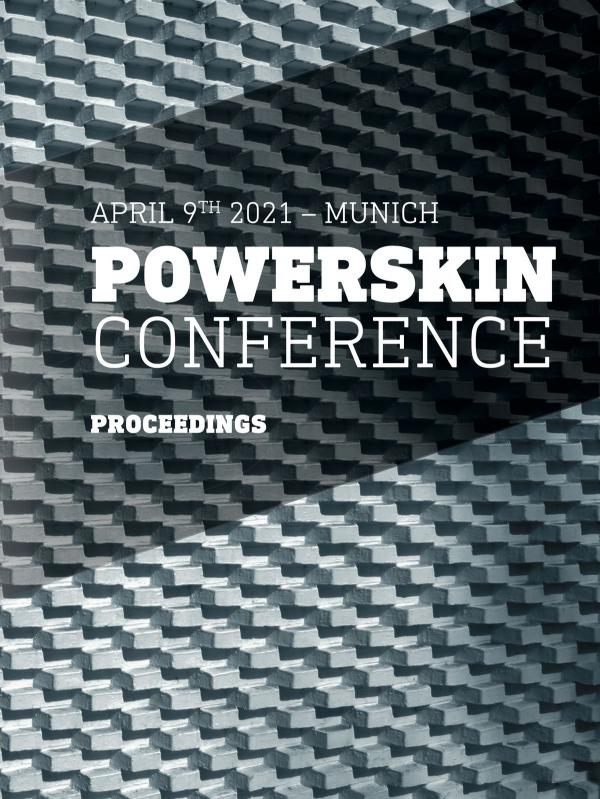Powerskin Conference Proceedings
April 9th 2021 - Munich

Synopsis
The building skin has evolved enormously over the past decades. The energy performance and environmental quality of both the interior and exterior of buildings are primarily determined by the building envelope. The façade has experienced a change in its role as an adaptive climate control system that leverages the synergies between form, material, mechanical and energy systems towards an architectural integration of energy generation. The PowerSKIN Conference aims to address the role of building skins to accomplish a carbonneutral building stock. The focus of the PowerSKIN issue 2021 deals with the question of whether simplicity and robustness stay in contradiction to good performance of buildings skins or whether they even complement each other: simplicity vs performance?
As an international scientific event - usually held at the BAU trade fair in Munich - the PowerSKIN Conference builds a bridge between science and practice, between research and construction, and between the latest developments and innovations for the façade of the future. Topics such as building operation, embodied energy, energy generation and storage in the context of the three conference sessions envelope, energy and environment are considered:
– Envelope: The building envelope as an interface for the interaction between indoor and outdoor environment. This topic is focused on function, technical development and material properties.
– Energy: New concepts, accomplished projects, and visions for the interaction between building structure, envelope and energy technologies.
– Environment: Façades or elements of façades, which aim to provide highly comfortable surroundings where environmental control strategies as well as energy generation and/or storage are an integrated part of an active skin.
The Technical University of Munich, TU Darmstadt, and TU Delft are signing responsible for the organisation of the conference. It is the third event of a biennial series: April 9th 2021, architects, engineers, and scientists present their latest developments and research projects for public discussion and reflection. For the first time, the conference will be a virtual event. On the one hand, this is a pity, as conferences are also about meeting people and social interaction; on the other hand, it offers the possibility that we can reach more people who connect from all over the world.





